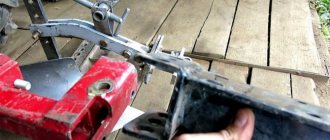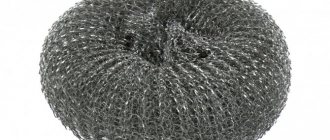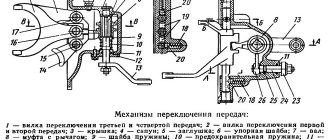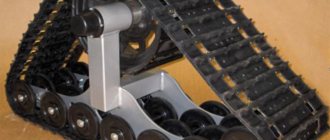Carpenters, joiners, fashion designers, carvers, turners and other manufacturers of wood products sometimes have to make cutters for processing wooden blanks with their own hands. This is not so much an opportunity to save money as it is the need to obtain a cutting tool with a given geometry. A homemade milling cutter for rough processing of any type of wood can be made in tens of minutes or several hours.
Features of a homemade wood cutter
Not every profile cutter is sold in the nearest store; a tool ordered in China or for individual production will have to wait a long time, and in the second case, you will also have to pay a lot. It is much easier to make it yourself.
To create a homemade cutter on a manual or vertical milling machine for wood processing you will need:
- The material is durable, heat-resistant steel that holds an edge well.
- An angle grinder or grinder with a cutting wheel for metal.
- Electric sharpener or other grinding tool.
- Vise.
- A drill or screwdriver and a welding inverter are not always needed.
The first copies will not satisfy the quality of surface treatment and geometry. May have poor balance - exhibit noticeable runout, leave a “dirty” rough surface due to incorrect sharpening angles or insufficient sharpness of the cutting edge. After manufacturing and finishing several cutters, the result will begin to please you.
Manufacturing of the product
Stage 1. Preparation for sharpening.
For this process we need a stone disk like the one in the photo. Who would be sorry to use new ones for this task - you can get them already, so to speak, used ones. After all, in the process you will have to slightly change the radius of the wheel so that when working on a stand, the product will end up with the desired shape. To do this, you should use “balls”, which will help you quickly bring the stone wheel into the desired shape.
Stage 2. Making knives.
Using the same stand, we cut out the shape we need according to the template. After the wheel became the desired shape (previous stage), this became much easier to do. Total: the product has become the shape we need. What's next? Next, we sharpen it to such an extent that the metal begins to bend slightly inward - this is what should serve as a signal that it is necessary to stop the process.
Stage 3. Formation of the finished product.
So, the final stage is formation. The knives that we obtained in the previous stages need to be inserted into the empty recesses on the cutter. At this stage, it becomes clear why it was necessary to observe the proportions of the sides at the previous stages. Carefully insert the knives all the way into the cutter and voila! – the product is completely ready for use, and the funds spent are minimal.
The period of operation of these homemade knives may vary, but according to statistics, it significantly exceeds the accessory knives included with the product, which require constant sharpening and attention during operation.
Observe the boundaries of the product according to the template, strictly follow the above instructions, and lo and behold - in no more than half an hour you will have at your disposal a high-quality product for a minimal amount.
Video: DIY woodworking cutters.
Types of cutters
For processing wood, board and composite materials based on it: chipboard, OSB, MDF, plywood and others, two types of cutters are used:
- End - clamped using a collet clamp. They have a shank like a drill and a cutting part of any configuration. They are used with manual routers, including those built into a table or stand, pantorouters on their base, and CNC machines.
Factory equipment
- Mounted or disk - made in the form of disks of any thickness. Designed for cutting grooves, tongues, quarters, profiling lumber and finished products. Installed on the shaft of a vertical milling or circular machine.
Mounted models
- Milling heads or drums are a tool for profiling lumber.
Drum with knives
What is needed for making
You can make a router with your own hands from a drill using any available materials. The main requirement: the structure must be durable, the presence of backlashes and distortions is not allowed, the electric drill must be securely fastened.
To make parts you can use:
- Chipboard or multilayer plywood with a thickness of 12 mm or more;
- cutting boards of suitable thickness;
- wooden bars.
It is also possible to use other materials. For example, you can use metal. A base made of thick plexiglass or acrylic is a good idea. The surface being treated will be visible through such material.
The parts are connected using self-tapping screws. For reliability, all fixed joints can be glued with any suitable glue (carpentry glue, PVA, etc.).
To fasten moving parts, you may need bolts or studs with a diameter of 6 - 8 mm . They will need nuts, both regular and wing nuts. Some connections may require washers. It is possible to use furniture fittings: guide mechanisms, various fasteners, and so on.
How to make a cutter for a manual vertical machine and grinder with your own hands
The materials for making the tool can be very diverse: old finger cutters for metal, taps, drills, rods made of tool or high-speed steel. Almost anything, even a bolt, but the quality of its work will be very low. You should make homemade wood cutters with your own hands from the following grades of steel: tool, high-speed, structural, alloy, spring-spring.
Option 1 - Forstner drill from a bolt with a non-standard size
A Forstner drill allows you to make through and blind holes in wood materials. There are plenty of them on the market, but with standardized sizes: from 10 to 35 or more mm in 5 mm increments. What if we need a hole with a diameter of 17 or 22 mm?
Take a bolt with a head a couple of millimeters in diameter larger than the drilling diameter. A pair of symmetrical slots are made in it, which will become the cutting edges.
Bolt processing
The bolt is placed in the drill (its standard chuck accepts bolts with a diameter of up to 13 mm), and it is clamped in a vice. The electric motor power button is clamped and fixed. Using a grinder, the edges of the bolt are cut to the diameter of the hole. Additionally, the operation will reduce vibration.
The end part is slightly removed, but so as to form a point in the center. It is better to leave the needle a larger size, and then modify it with a burr or a needle file.
Grinding
They are formed, brought to perfection and sharpened at an angle of 35-40° - the harder the wood, the blunter the angle - the cutting edges of the tool. Afterwards they can be finished with a whetstone to give them ideal geometry and sharpness.
Sharpening
After completion of the work, the homemade cutter is tested at low speeds in a drill or drilling machine. It is strictly prohibited to install such equipment on a high-speed milling cutter:
- the collet clamp may be damaged;
- there is a high probability of the bolt flying out due to unreliable fastening;
- runout will accelerate failure of at least the bearing.
Option 2 – shear cutter
For a stationary vertical router or circular saw, disc cutters are needed. For wood processing, pass-through or slotted metal discs are often used. If they have many teeth, they are cut off one after another with a grinder or ground down on an emery wheel. When working at low speeds and sharpening properly, it copes well with quarters, grooves, and tongues. The main thing is to choose a cutter with a landing diameter that matches the thickness of the shaft. You can also use adapters or adapter rings - order from a turner.
Disc models
If necessary, the teeth can be given any shape, for example, to make grooves for dovetails.
Option 3 – homemade cutter from a hairpin and a circular saw
A homemade wood cutter for a hand router is made from an old circular saw from a circular saw and round timber processed on a lathe. It is practical for making grooves for inserting slats in the manufacture of frames and drawers.
Teeth of the same shape and size are cut from the saw. Holes are drilled in the workpieces with a 6 or 8 mm drill, and they are put on a bolt of appropriate thickness through spacers in the form of small bearings, washers or other similar objects. The latter set the distance between cuts.
saw tooth
They are pressed with a nut through a washer and an engraver or with a pair of nuts for reliability. It is advisable to cut off their edges to minimize vibration. Afterwards, the teeth are equalized in height, and the cut ones are sharpened.
Ready-made equipment
To create shaped cutters from a saw blade, you will need a turner or lathe. A workpiece is turned on it, a thread is cut, then a slot is made at the end for a knife. It is cut from strong steel, such as a saw blade or blade.
Tool blank
The cutting part is inserted into the groove and pressed with a nut with embedded edges through the engraver. If possible, a support bearing can be installed in front of the nut; otherwise, its role is partially performed by the nut.
Shaped
Option 4 – cutter from a tap or drill
A DIY wood end mill is made from old drills, taps, countersinks, reamers and other tools. At clothing markets they are sold for several tens of rubles. In general, the manufacturing process consists of cutting teeth, forming a profile, and a cutting edge. To do this you need a drill, grinder, burr, needle file or file and a vice. The set of tools depends on the material used, the desired profile, the types of wood being processed, etc.
The main thing when processing hardened steel using an angle grinder or sharpening machine is not to overheat it: the material is removed in thin layers. The workpiece should cool naturally or be doused with water before it becomes very hot. A hot homemade cutter cannot be cooled with liquid.
Tap product
With soldering
Using a lathe, a tool for cutting grooves and tongues.
You can use a tapping tool and drill bits to make end mills for a hand router, even without a lathe. The part is clamped into the drill chuck, which, in turn, is rigidly fixed in a vice. The drill is started, and the future cutter is given the required profile. It is refined and sharpened on a grinder or with a burr machine.
Remaking taps and reamers
Option 5 - homemade wood core cutter from a gear
The most suitable material is timing gear. The cutting edges are formed with a grinder, sharpened and brought to perfection.
Timing gear
The cutting part is heated to red and cooled in oil or water for hardening - increasing the mechanical strength of a homemade cutter.
Steel hardening
A homemade cutter can be used as an attachment cutter or an adapter can be made for screwing onto the angle grinder shaft. You need to be prepared to experiment with the sharpening angle.
Preparing the template
Stage 1. Sketching.
The materials that may be needed at this stage look like this. Using a ruler and pencil, it is worth sketching the knives, since they are a direct reflection of the future cutter. If they are not available, it is not a problem to find an example on the Internet, and then redraw its profile and follow further instructions.
Stage 2. Cut out the shape.
Depending on how many knives we ultimately need, we count out the required number with a leaf and, grabbing them, carefully cut out the shape of the future product, without catching either the “edge” or the two load-bearing sides of the knife.
Stage 3. Making the mold.
Using glue, glue the template to the workpiece and carefully saw off the excess length with a grinder. Remember: it is important to preserve not only the edge, but also the sides! So, when working with an angle grinder, you should be somewhat careful and take into account the dimensions of the product.
Manufacturing process
In everyday life, a vertical manual router is often used. It has the easiest design to repeat. It is enough to make a stand with a mount for an electric drill, and the device is ready to perform simple operations. An example of such a homemade unit is in the photo below.
The process of making such a base is quite simple:
- The first part that is best to start with is the base (sole). It is necessary to cut the workpiece into a round or oval shape.
- Next, make a hole for the cutter. It should be offset relative to the center of the part, taking into account the thickness of the side post.
- Depending on the dimensions of the electric drill, a stand of the required size is made and secured to the base with self-tapping screws or furniture fittings.
- The rigidity of the fastening is ensured by a spacer (kerchief). The inner sides of this part must have an angle of strictly 90°.
- The next element is the drill mount. You can use a pipe clamp, as in the photo, or make a clamp from wood or plywood and secure it with self-tapping screws.
- As an additional fixation, a stop is installed above the drill.
This option is suitable for doing rough work or will serve as a temporary alternative to a full-fledged tool. To perform more precise operations, you will have to develop a more complex design.
There is nothing stopping you from equipping your “homemade product” with adjustable cutter reach or the ability to change the angle of inclination. It is possible to use a drill in a tabletop milling machine. To do this, the electric drill is installed vertically under the working surface.
How are bodies of revolution processed?
The factory kit does not include a device for a router that allows you to cut grooves in cylindrical and conical workpieces. But home craftsmen have learned to make them themselves.
The product consists of the following parts:
- Cases.
- Movable milling carriage.
- Disk for adjusting the angle of rotation.
- Clamp for fastening the workpiece.
- Set screw.
The mechanism can be turned into a lathe by connecting an electric drill or screwdriver to it.











